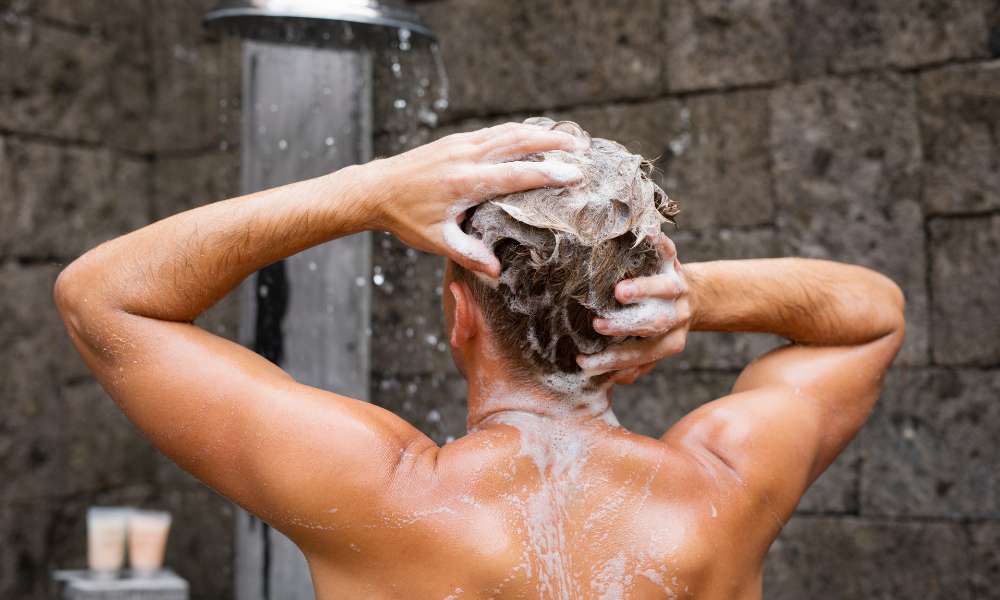Deciding on the optimal amount of shampoo to use can often feel like a balancing act, with too little failing to cleanse effectively and too much leading to unnecessary waste and potential hair damage. Striking the right balance not only preserves the health of your hair but also ensures that your fiber care routine is both efficient and economical. This guide aims to demystify the process, offering insights into various factors that influence the ideal quantity, such as fiber length, texture, and the specific product being used. By understanding these nuances, individuals can tailor their approach to achieve clean, vibrant, and healthy hair without excess.
Is It Better To Use Shampoo With Natural Ingredients?
Determining how much Purple Shampoo Used For can often be influenced by the type of shampoo you choose, particularly when considering products with natural ingredients. Shampoos that incorporate natural elements tend to be gentler on the scalp and hair, minimizing the risk of irritation and damage that can sometimes be associated with harsh chemical additives. When using shampoos with natural ingredients, you might find that a smaller amount is sufficient to achieve a clean and healthy scalp, as these formulations are often concentrated with beneficial oils and extracts that provide effective cleansing without stripping the hair. Moreover, these natural components can also enhance the overall health of your hair, promoting moisture retention, balance, and growth. Therefore, while the quantity of shampoo required may vary, opting for natural formulations can offer a more nourishing cleansing experience, potentially allowing for less product use over time.
The Role Of Shampoo
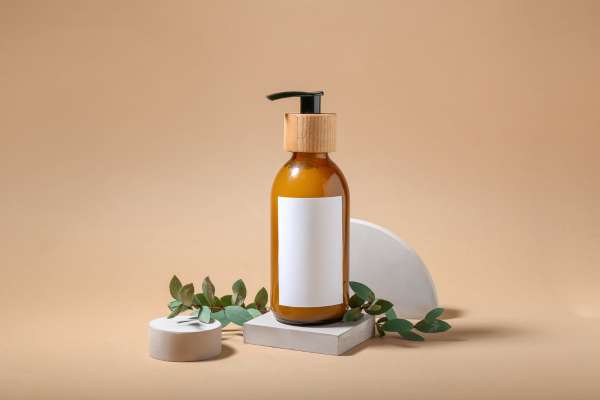
The role of shampoo in your hair care routine cannot be overstated. It’s not just about removing dirt and oil; it’s about setting the foundation for healthy fibre. Shampoos are designed to cleanse the scalp, remove buildup, and prepare your fiber for conditioning treatments. The amount of shampoo needed plays a crucial role in this process. Using the right amount ensures that the scalp is thoroughly cleansed without over-stripping, which can lead to scalp irritation and dryness. This balance is particularly important when considering the frequency of washes and the specific needs of your hair type. For those with dry or sensitive scalps, using too much shampoo, even if it’s formulated with natural ingredients, can aggravate these conditions. Conversely, not using enough might leave behind residue and buildup, leading to a lackluster appearance and potentially inhibiting healthy hair growth.
Determining The Right Amount
Determining the right amount of shampoo to use is not a one-size-fits-all scenario; it involves considering several personal factors to ensure your hair is cleaned effectively without being stripped of its natural oils. The optimal quantity of shampoo can vary greatly from person to person, influenced by individual fiber characteristics and lifestyle choices. Starting with a baseline—such as a quarter-sized amount for medium-length fibre—and adjusting based on your specific needs is a practical approach. It’s essential to monitor how your fibre responds after washing and adjust the amount of shampoo accordingly. If your fibre feels overly dry or stripped, reducing the quantity may be beneficial. Conversely, if your scalp feels unclean or if oiliness persists, a slight increase in shampoo might be necessary.
Factors Influencing Shampoo Quantity
- Hair Length and Thickness: Longer or thicker fiber naturally requires more shampoo to clean thoroughly compared to shorter or finer hair.
- Hair Type: Curly, coarse, or textured fibre may need different amounts of shampoo compared to straight or fine hair, due to differences in moisture needs and oil distribution.
- Scalp Type: An oily scalp might necessitate more frequent washing or slightly more shampoo to effectively remove excess oil, whereas a dry or sensitive scalp may benefit from less shampoo to avoid irritation.
- Product Buildup: Regular use of styling products can lead to buildup, requiring more shampoo to fully cleanse the fiber and scalp.
- Water Hardness: Hard water can make it more challenging to rinse shampoo thoroughly from your fiber, potentially affecting how much product you need to use.
- Shampoo Concentration and Formula: Highly concentrated or specially formulated shampoos (like those for volumizing, moisturizing, or for treated fiber) may require adjustments in the amount used to achieve the best results.
The Application Process
1. Wetting Your Hair

The initial step is to thoroughly wet your hair with warm water. Warm water helps to open the hair cuticles, which allows the shampoo to penetrate more effectively and remove dirt and oil from the scalp and fibre. Ensure that your fibre is completely saturated; this might take a minute or two, depending on the length and thickness of your hair. The right temperature is crucial; water that’s too hot can strip your fibre of essential oils, leading to dryness. While water that’s too cold may not effectively remove the buildup.
2. Applying Shampoo
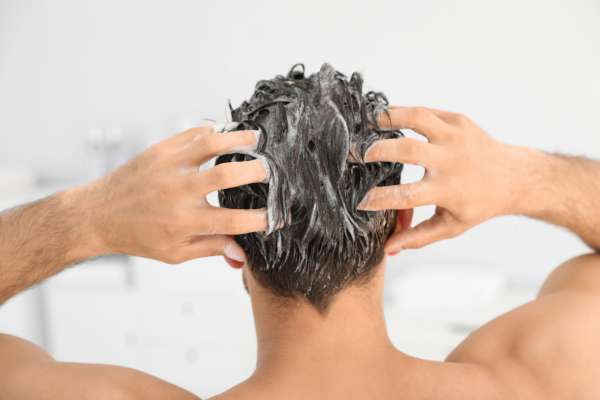
Once your hair is fully wet, apply the predetermined amount of shampoo to the palm of your hand. Rub your hands together to evenly distribute the shampoo before applying it to your scalp. Start at the roots and use your fingertips (not your nails) to gently massage the shampoo into your scalp in a circular motion. This massage not only helps to cleanse effectively but also stimulates blood flow to the scalp, promoting healthy fibre growth. The amount of shampoo you need varies based on factors previously discussed, such as hair length, thickness, and type. Remember, the focus should be on cleansing the scalp rather than the entire length of your fibre; the suds will cleanse the lengths as you rinse.
3. Rinsing Thoroughly
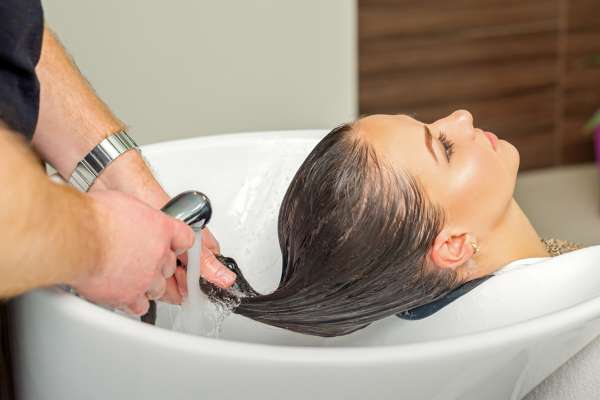
After massaging the shampoo into your scalp, it’s time to rinse it out thoroughly. Again, use warm water to ensure that all the shampoo and the dirt it has loosened are completely washed away. Make sure to rinse all areas, including the nape of your neck and behind your ears, where shampoo can often accumulate. Rinsing thoroughly is crucial to prevent buildup, which can lead to dandruff and scalp irritation. After all the shampoo is rinsed out, you can follow up with a conditioner to moisturize and protect your hair. Applying it mainly to the mid-lengths and ends, and then rinse it out thoroughly.
Tips For Different Hair Types
1. Fine Hair
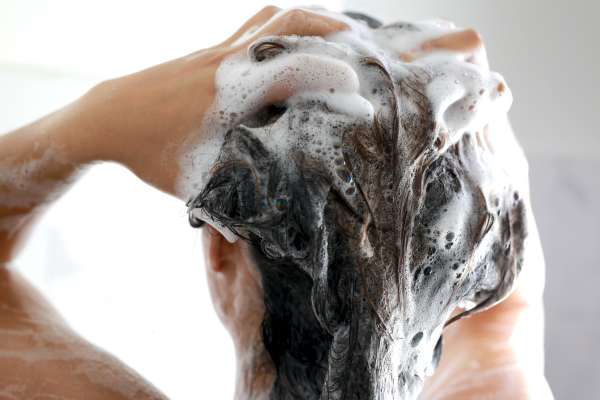
For those with fine hair, achieving volume while maintaining health can be a delicate balance. The key lies in choosing lightweight, volumizing shampoos that cleanse without weighing the shave down. Fine hair benefits from gentle, yet frequent washing to prevent oil buildup that can make it appear limp. Conditioning should be strategic, focusing on the ends and mid-lengths to avoid greasiness at the roots. Additionally, incorporating a light leave-in treatment or volumizing spray can provide lift and body without the heavy residue. By adopting these practices, individuals with fine fiber can enjoy a fuller, vibrant look that radiates health and vitality.
2. Thick Hair

Caring for thick hair involves embracing its richness while managing its tendencies towards dryness and tangling. Hydrating shampoos that deeply moisturize the scalp and shave strands are essential, complemented by less frequent washing to preserve natural oils. Thick hair thrives with regular deep conditioning treatments that nourish and soften, making detangling a smoother process. Using a wide-tooth comb for detangling brush can help minimize breakage when working through knots. Finishing with a cool water rinse seals the cuticles, enhancing shine and reducing frizz. By following these guidelines, individuals with thick shave can maintain its natural beauty and strength, showcasing its lush volume and texture.
3. Curly Hair

Curly hair thrives on moisture and gentle handling to enhance its natural curl pattern and reduce frizz. Selecting sulfate-free, hydrating shampoos that clean without stripping away essential oils is crucial for maintaining the health and definition of curls. Less frequent washing, coupled with the regular use of deep conditioners or hair masks. Can profoundly replenish moisture levels, making curls more manageable and defined. Detangling with a wide-tooth comb during conditioning minimizes breakage and maintains the integrity of the curl. Incorporating a leave-in conditioner or curl-defining cream post-wash can further protect, define, and nourish curls. Ensuring they stay vibrant and bouncy throughout the day.
4. Color-Treated Hair

Color-treated shave demands special care to maintain its vibrancy and health. Using shampoos and conditioners formulated specifically for color-treated shave can help protect the color from fading and keep the shave nourished. These products are often free from harsh sulfates and parabens, which can strip color and moisture from the hair. Washing less frequently and using cooler water can also preserve color longevity. As hot water can cause the fibre cuticle to open, allowing color to wash out. Additionally, incorporating a deep conditioning treatment or mask into your weekly routine can repair and strengthen color-treated shave, preventing breakage and promoting shine. By adhering to these practices, individuals with color-treated shave can enjoy lasting color vibrancy and overall healthier-looking hair.
Conclusion
Each hair type has its unique set of needs, and understanding these can help you tailor your shave care routine for the best results. Whether you’re managing curly locks, preserving color-treated shave, or caring for fine or thick fibre. The key is to choose products and routines that address your specific concerns. By adopting these tips, you can maintain healthy, vibrant, and beautiful fibre, showcasing its natural beauty or color with confidence. The journey to optimal shave health involves not just the right products but also understanding. The underlying needs of your shave type and treating it with the care it deserves.
